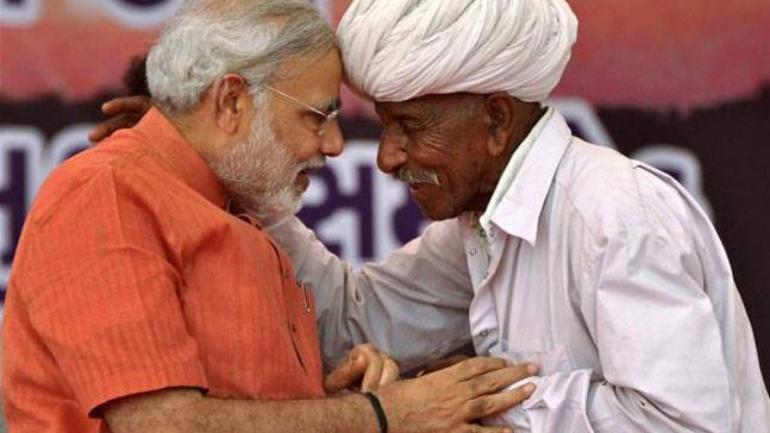Many critics have argued that the Modi government’s scheme to transfer a sum of 6,000 rupees per year to farmers of the country is a populist measure aimed at the upcoming Lok Sabha elections. Some are even of the view that the Modi government through income support scheme has switched from its stance of making development based policies to appeasement of farmers. However, these critics seem to have forgotten that the farmers have already shouldered the low-inflation and pro-consumer policies of the government. The first two years of Modi government has been affected by droughts and farmers of the country were at the receiving end. After that, for consecutive years, India witnessed a record production in the farm sector but food prices crashed due to low inflation.
One of the most under-rated reforms of the Modi government has been its inflation targeting. The government brought Monetary Policy Committee bill in June 2016 and constituted a committee to look after the policy rates. Currently, the Committee consists of 6 members with equal representation from RBI and the government. The Committee is tasked with keeping the inflation in the range of {4(+-) 2} percent. “The inflation targeting regime has been one of the top reforms, almost as significant as GST and the Bankruptcy Code,” said Pranjul Bhandari, chief India economist at HSBC.
In the last two months, monthly inflation rates have neared to the 2 percent market, it was at 2.33 percent in November and dropped further to 2.19 percent in December. This was made possible despite growth rates higher than 7 percent. It may be a cue for the RBI to drop repo rates but this period of low retail inflation shall benefit consumers. In the latest projections, food prices have taken the greatest hit, deflating by 2.51 percent while headline inflation stood at 2.19 percent.
Moreover, low-inflation is harmful to public finances and the government borrows heavily from markets to support the fiscal deficit. Almost one-fifth of the government expenditure is supported by borrowings and with the interest already paid for this. If the inflation rate is higher, it brings down the effective interest rate (Real interest rate-inflation). Therefore, the government needs to pay less on borrowings if the inflation is high but the Modi government chose to keep inflation rates low for the benefit of consumers. However, the government has to pay the price for this by paying high interest on borrowings. The farmers also paid the price of low inflation as their earnings were hurt given the low food prices.
Therefore, the income support scheme through direct benefit transfer is compensation to the farmers of the country. The interest of farmers and consumer lie on the opposite side of the spectrum and Modi government chose the interest of consumers. Largely, this is a right approach and followed across the world because the farmer is also a consumer and thus can get the benefit of low-inflation. But ultimately, the loss of the farmers had to be compensated and the income support is a policy in the right direction.
The Modi government along with low-inflation has maintained the good GDP growth and healthy public finances. This is almost an impossible combination and has been witnessed for a very short span of time in a very few countries. By virtue of healthy management of the economy, India has become the fastest growing major economy in the world. The nation is growing at a good pace while the world witnesses a slow-down.
Moreover, the farmer income support in neither populist nor the government has deviated from development politics as some experts argue. All that is needed is empathy towards farmers and ‘right’ lens to assess the policies of the Modi government.
